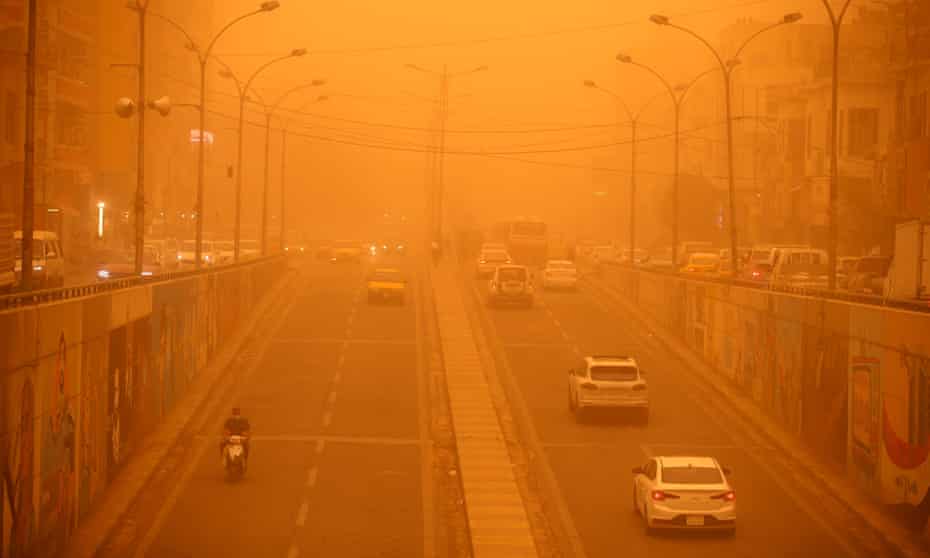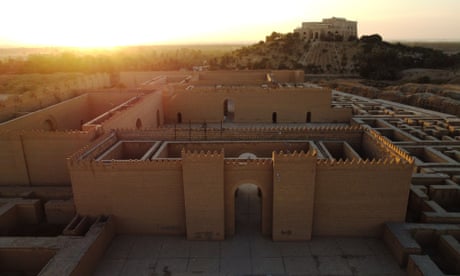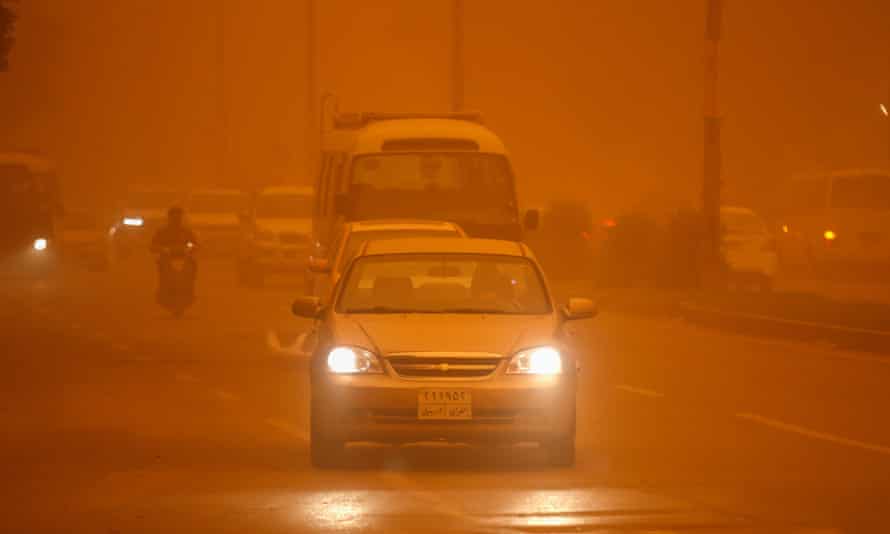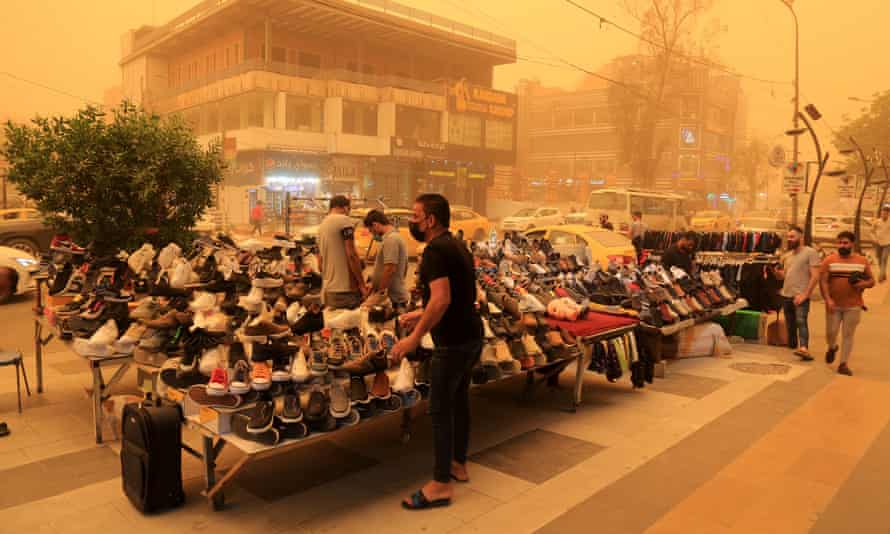Thick sheet of orange shrouds country as experts say phenomenon to become more frequent due to drought and declining rainfall

Agence France-Presse
Iraq was yet again covered in a thick sheet of orange on Sunday as it suffered the latest in a series of dust storms that have become increasingly common.
Dozens were hospitalised with respiratory problems in the centre and the west of the country.
A thick layer of orange dust settled across streets and vehicles, seeping into people’s homes in the capital Baghdad.

Iraq’s ancient buildings are being destroyed by climate change
Flights were grounded because of poor visibility at airports serving Baghdad and the Shiite holy city of Najaf, with the phenomenon expected to continue into Monday, according to the weather service.
“Flights have been interrupted at the airports of Baghdad and Najaf due to the dust storm,” the spokesperson for the civil aviation authority, Jihad al-Diwan, said.

Visibility was cited at less than 500 metres, with flights expected to resume once weather improves.
Hospitals in Najaf received 63 people suffering from respiratory problems as a result of the storm, a health official said, adding that the majority had left after receiving appropriate treatment.
Another 30 hospitalisations were reported in the mostly desert province of Anbar in the west of the country.
Iraq was hammered by a series of such storms in April, grounding flights in Baghdad, Najaf and Arbil and leaving dozens hospitalised.

Amer al-Jabri, of Iraq’s meteorological office, previously said the weather phenomenon is expected to become increasingly frequent “due to drought, desertification and declining rainfall”.
Iraq is particularly vulnerable to climate change, having already witnessed record low rainfall and high temperatures in recent years.
Experts have said these factors threaten to bring social and economic disaster in the war-scarred country.

In November, the World Bank warned that Iraq could suffer a 20% drop in water resources by 2050 due to climate change.
In early April, Issa al-Fayad, an environment ministry official, had warned that Iraq could face “272 days of dust” a year in coming decades, according to the state news agency INA.
The ministry said the weather phenomenon could be addressed by “increasing vegetation cover and creating forests that act as windbreaks”.



.jpg)
















